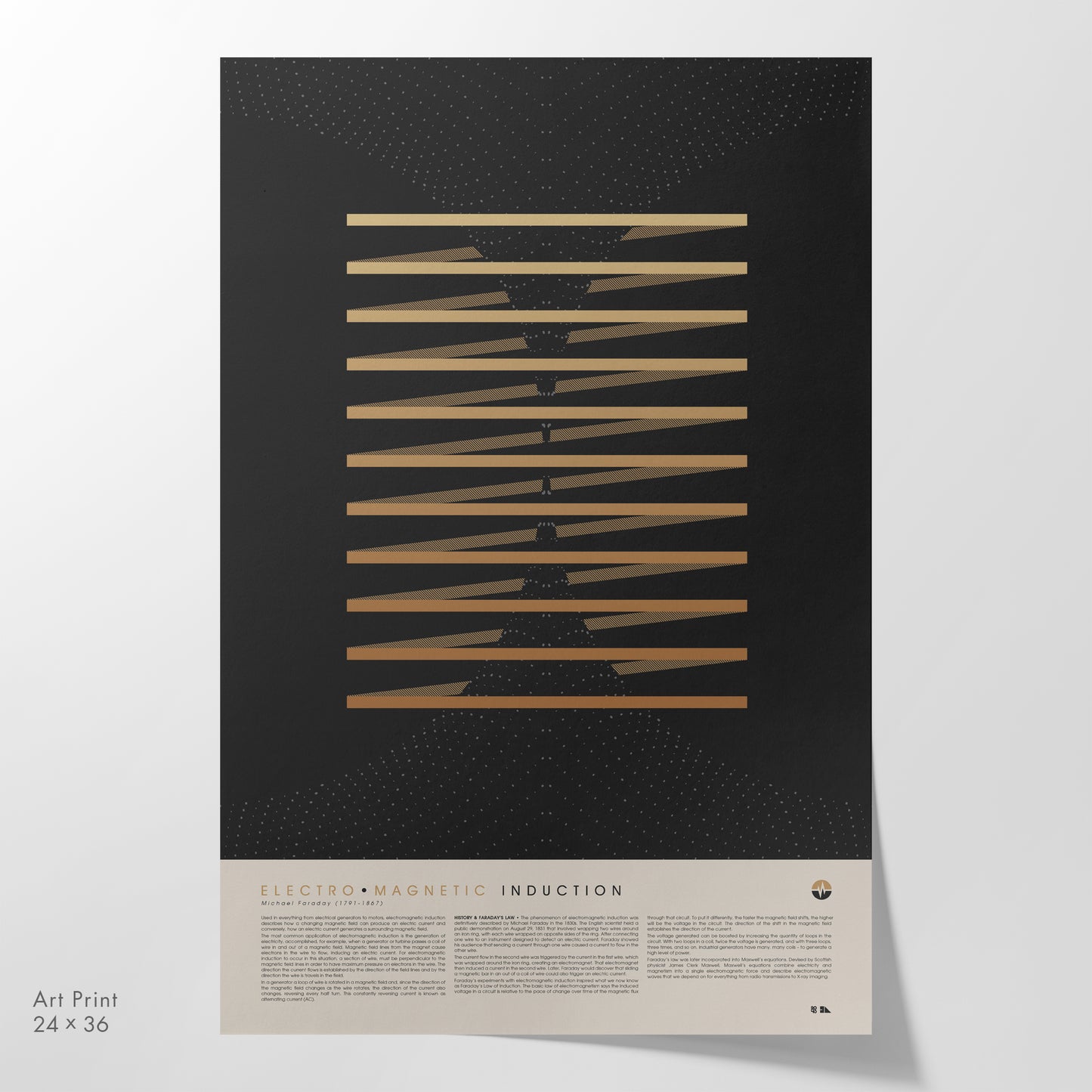Size Chart

Length unit:
Sizes may vary up to 1
HPSL: High Point Shoulder Length
BW: Bust Width (width of shirt measured 1" below armhole)
Couldn't load pickup availability
Used in everything from electrical generators to motors, electromagnetic induction describes how a changing magnetic field can produce an electric current, and conversely how an electric current generates a surrounding magnetic field.
The most common application of electromagnetic induction is the generation of electricity; when a generator or turbine passes a coil of wire in and out of a magnetic field. Magnetic field lines from the magnet cause electrons in the wire to flow, inducing an electric current.
For electromagnetic induction to occur in this situation, the conductor, a section of wire, must be perpendicular to the magnetic field lines in order to have maximum pressure on electrons in the wire. The direction the current flows is established by the direction of the field lines and by the direction the wire is traveling in the field.
In a generator, a loop of wire is rotated in a magnetic field, and since the direction of the magnetic field changes as the wire rotates, the direction of current changes, revering every half turn. This constantly reversing current is what we know as alternating current (AC).
The phenomenon of electromagnetic induction was definitively described by Michael Faraday in the 1830s. The English scientist held a public demonstration on August 29, 1831 that involved wrapping two wires around an iron ring, with each wire wrapped on opposite sides of the ring. After connecting one wire to an instrument designed to detect an electric current, Faraday showed his audience that sending a current through one wire caused a current to flow in the other wire.
The current flow in the second wire was triggered by the current first wire, which was wrapped around the iron ring, creating an electromagnet. That electromagnet then induces a current in the second wire. Later, Faraday would discover that sliding a magnetic bar in an out of a coil of wire could also trigger an electric current.
Faraday’s experiments with electromagnetic induction inspired what we now know as Faraday’s Law of Induction. The basic law of electromagnetism says the induced voltage in a circuit is relative to the pace of change over time of the magnetic flux through that circuit. To put it differently, the faster the magnetic field shifts, the higher will be the voltage in the circuit. The direction of the shift in the magnetic field establishes the direction of the current.
The voltage generated can be boosted by increasing the quantity of loops in the circuit. With two loops in a coil, it generates double the voltage of one loop, and with three loops it would be three times as much and so on. This is why industrial generators have many, many coils – to generate a high level of power.
In addition to laying the theoretical foundation for modern society, Faraday’s law was later incorporated into Maxwell’s equations. Devised by Scottish physicist James Clerk Maxwell, Maxwell’s equations combine electricity and magnetism into a single electromagnetic force and describe electromagnetic waves that we depend on for everything from radio transmissions to X-ray imaging.







Join us in making sure that everyone (friends, colleagues, family, and perfect strangers) is working to build public support and political will for the big solutions needed to address climate justice.
Pin Save the Climate donates 50% of profits to climate justice organizations.